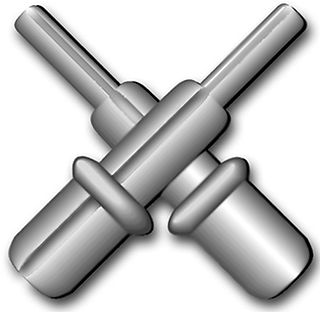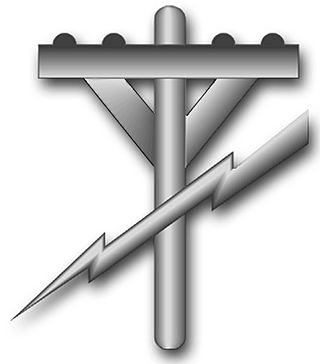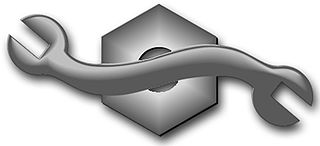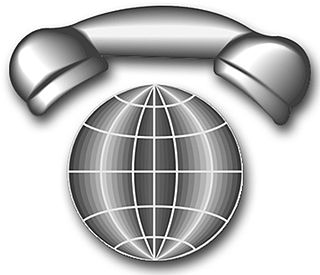Petty officer second class (PO2) is a rank found in some navies and maritime organizations.

The Armed Services Vocational Aptitude Battery (ASVAB) is a multiple choice test, administered by the United States Military Entrance Processing Command, used to determine qualification for enlistment in the United States Armed Forces. It is often offered to U.S. high school students when they are in the 10th, 11th and 12th grade, though anyone eligible for enlistment may take it.
The Enlisted Aviation Warfare Specialist (EAWS) insignia is a military badge of the United States Navy which was created in March 1980. The insignia recognizes those members of the Navy's enlisted force who have acquired the specific professional skills, knowledge, and military experience that result in qualification for service in the aviation activities of the Navy. This includes most personnel who are trained flight deck personnel onboard aircraft carriers, or maintenance personnel at an Aircraft Intermediate Maintenance Detachment or Department (AIMD) or aircraft squadron.

Machinist's mate is a rating in the United States Navy's engineering community.

The United States Navy and United States Coast Guard occupational rating of gunner's mate (GM) is a designation given by the Bureau of Naval Personnel (BUPERS) to enlisted sailors who either satisfactorily complete initial Gunner's Mate "A" school training, or who "strike" for the rating by showing competence in the field of ordnance. When "striking" one isn't required to be a seaman, but must belong to one of three undesignated rates: Fireman (FN), Seaman (SN), or Airman (AN). It is also possible to cross rate to Gunner's Mate. Cross rating refers to the act of an enlisted sailor "crossing" from their current rating to another rating of their choice, provided their ASVAB scores are high enough and there are open slots for the rate.

Aviation Electrician's Mate is a United States Navy occupational rating.

Construction electrician is a United States Navy occupational rating.

Construction mechanic is a United States Navy occupational rating.

Mass Communication Specialist is a United States Navy public affairs type rating. MCs practice human-centered design to develop creative communication solutions and align communication strategies and tactics to leadership's intent; conduct research and develop audience profiles; prepare, process, and print publications and media products; create sketches, storyboards, and graphics; design publications; produce still imagery, and written, audio, video, and multimedia information products; collect, analyze, and report media project and communication plan feedback and performance information; create media project plans; conduct community outreach, news media operations, leadership communication operations, and organizational communication operations; plan and direct communication campaigns and events and serve as communication advisors to commanders; and develop content strategies, create data stories, and ensure communication products and experiences are designed to enhance understanding and discoverability. MCs serve aboard ships, in expeditionary units and at shore commands in the United States and overseas.
Torpedoman's Mate is a United States Navy occupational rating. It was disestablished on submarines in 1995 and on surface ships on 1 October 2007. Surface torpedomen were merged into the gunner's mate rating, while submarine torpedomen were merged into the machinist's mate (non-nuclear) rating, becoming MM(W) or machinist mates (weapons). It was re-established on 30 September 2019 via NAVADMIN 225/19. The TM rating badge will be the same one in use when the rating was disestablished in 1995.

Interior communications electrician (IC) is a rating in the United States Navy. They operate and perform organizational and intermediate maintenance on alarm, warning, and indicator systems; interior communications; and ship's control, entertainment, and navigation systems. IC is one of the most versatile ratings in the U.S. Navy with equipment all the way forward, all the way aft, all the way up the mast and on the bottom of the ship. Members of this rating are commonly referred to as "IC-men" by Navy personnel.

Nuclear Power School (NPS) is a technical school operated by the U.S. Navy in Goose Creek, South Carolina as a central part of a program that trains enlisted sailors, officers, KAPL civilians and Bettis civilians for shipboard nuclear power plant operation and maintenance of surface ships and submarines in the U.S. nuclear navy. As of 2020 the United States Navy operates 98 nuclear power plants, including 71 submarines, 11 aircraft carriers, two Moored Training Ships (MTS) and two land-based training plants. NPS is the centerpiece of the training pipeline for U.S. Navy nuclear operators. It follows initial training at Nuclear Field "A" School or a college degree, and culminates with certification as a nuclear operator at one of the Navy's two Nuclear Power Training Units (NPTU).

The United States Navy job rating of electronics technician (ET) is a designation given by the Bureau of Naval Personnel (BUPERS) to enlisted members who satisfactorily complete initial Electronics Technician "A" school training.

Electronics Technician (ET) is a common enlisted occupation in the armed forces of many different countries. Common duties for ETs include repair, calibration, and basic maintenance of most electronic equipment.
The United States Navy Nuclear Propulsion community consists of Naval Officers and Enlisted members who are specially trained to run and maintain the nuclear reactors that power the submarines and aircraft carriers of the United States Navy. Operating more than 80 nuclear-powered ships, the United States Navy is currently the largest naval force in the world.

Marine Science Technician (MST) is an enlisted rate in the United States Coast Guard. They are specialists in enforcing Federal Maritime Laws for Marine Safety, Marine Security, and Environmental Protection.

The Master-at-Arms (MA) rating is responsible for law enforcement and force protection in the United States Navy—equivalent to the United States Army Military Police, the United States Marine Corps Military Police, the United States Air Force Security Forces, and the United States Coast Guard's Maritime Law Enforcement Specialist. It is one of the oldest ratings in the United States Navy, having been recognized since the inception of the U.S. Navy.

The Submarine Development Program (PROSUB) is a partnership signed between Brazil and France in 2008, with the objective of transferring technology for the manufacture of military vessels. It is a component of the Brazil's Defense Strategy to develop the country's naval power with the production of four conventional submarines and the first Brazilian nuclear-powered submarine. The program will make Brazil one of the few countries to have nuclear technology, alongside the United States, Russia, France, the United Kingdom, China, and India.
















